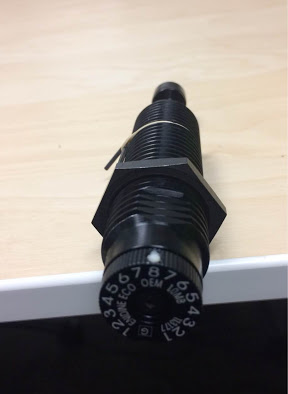Recently, I sat down with our editorial director Paul Heney to explore how shock absorbers improve industrial and consumer designs for warehouse storage and retrieval; conveyor and steel-mill end stops; packaging and plastic-bottle machinery; and various robotic and crane setups.
We reviewed three small hydraulic shock absorbers from ITT Enidine:
Unlike vibration (those small oscillations from frequency excitation mostly from assembly imbalance) shock is impact anywhere there’s a hard stop or collision.
So adding shock absorbers and rate limiters extends machine life and boosts production quality.
More specifically, shock absorbers manage kinetic energy at the very ends of machine-axis movements — so moves can happen as fast as possible without slamming, banging, bouncing or breaking afterwards. This boosts production speeds and throughput from the start, for shock absorbing that’s better tailored than what’s installed after machine failure. Incorporating shock absorption into equipment or facility upfront also lowers reaction forces on structures, equipment, and products.
In some shock-absorber designs, load on the piston pressurizes fluid inside and forces it to flow through restricting orifices — causing the fluid to heat rapidly. That thermal energy then dissipates via the cylinder body to the atmosphere.
Unlike automotive-style shock absorbers that use deflective beams and washer orifice, these industrial shock absorbers use single or multi-orifice setups and metering pins. So automotive types have damping forces that vary with piston velocity — but industrial types deliver damping force that’s in proportion to the square of piston velocity. Plus the damping force of industrial types can be setup to be dependent or independent of stroke position. Industrial shock absorbers use stronger materials than automotive types for higher damping forces.
 Shown to the left here is an adjustable shock absorber from ITT Enidine’s ECO line. Dialing it to the right level helps it safely dissipate energy … from there, watch and listen to ensure it’s set correctly.
Shown to the left here is an adjustable shock absorber from ITT Enidine’s ECO line. Dialing it to the right level helps it safely dissipate energy … from there, watch and listen to ensure it’s set correctly.
It’s done like this: First set the adjustment knob at zero prior to system engagement.
Then cycle the mechanism and observe deceleration. If damping appears too soft (and the unit strokes bangs at end of stroke without visual deceleration) move indicator to next largest number.
Here make adjustments in gradual increments to avoid internal damage … until impacts meet with smooth deceleration and negligible noise when the system decelerates or comes to rest.
Filed Under: Motion Control Tips




